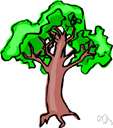beefwood
Also found in: Thesaurus, Encyclopedia, Wikipedia.
beef·wood
(bēf′wo͝od′)n.
Any of various Australian trees or shrubs having dense red timber, including several casuarinas.
American Heritage® Dictionary of the English Language, Fifth Edition. Copyright © 2016 by Houghton Mifflin Harcourt Publishing Company. Published by Houghton Mifflin Harcourt Publishing Company. All rights reserved.
beefwood
(ˈbiːfˌwʊd)n
1. (Plants) any of various trees that produce very hard wood, esp the Australian tree Casuarina equisetifolia, widely planted in warm regions. See casuarina
2. (Plants) the wood of any of these trees
[from the red colour and grain]
Collins English Dictionary – Complete and Unabridged, 12th Edition 2014 © HarperCollins Publishers 1991, 1994, 1998, 2000, 2003, 2006, 2007, 2009, 2011, 2014
beef•wood
(ˈbifˌwʊd)n.
1. any of several chiefly Australian trees of the genus Casuarina, having feathery branches that lack true foliage leaves.
2. the hard, reddish wood of any of these trees, used for making furniture.
[1830–40; so called from its beeflike color]
Random House Kernerman Webster's College Dictionary, © 2010 K Dictionaries Ltd. Copyright 2005, 1997, 1991 by Random House, Inc. All rights reserved.
ThesaurusAntonymsRelated WordsSynonymsLegend:
Switch to new thesaurus
| Noun | 1. |  beefwood - a tropical hardwood tree yielding balata gum and heavy red timber beefwood - a tropical hardwood tree yielding balata gum and heavy red timberbalata, gutta balata - when dried yields a hard substance used e.g. in golf balls tree - a tall perennial woody plant having a main trunk and branches forming a distinct elevated crown; includes both gymnosperms and angiosperms |
| 2. | beefwood - any of several heavy hard reddish chiefly tropical woods of the families Casuarinaceae and Proteaceae; some used for cabinetwork Grevillea striata, beefwood - tree yielding hard heavy reddish wood scrub beefwood, Stenocarpus salignus, beefwood - tree or tall shrub with shiny leaves and umbels of fragrant creamy-white flowers; yields hard heavy reddish wood beefwood - any of several Australian trees of the genus Casuarina yielding heavy hard red wood used in cabinetwork wood - the hard fibrous lignified substance under the bark of trees | |
| 3. | beefwood - any of several Australian trees of the genus Casuarina yielding heavy hard red wood used in cabinetwork genus Casuarina - genus of trees and shrubs widely naturalized in southern United States and West Indies; coextensive with the family Casuarinaceae and order Casuarinales casuarina - any of various trees and shrubs of the genus Casuarina having jointed stems and whorls of scalelike leaves; some yield heavy hardwood Australian pine, Casuarina equisetfolia - common Australian tree widely grown as an ornamental in tropical regions; yields heavy hard red wood beefwood - any of several heavy hard reddish chiefly tropical woods of the families Casuarinaceae and Proteaceae; some used for cabinetwork | |
| 4. | beefwood - tree or tall shrub with shiny leaves and umbels of fragrant creamy-white flowers; yields hard heavy reddish wood genus Stenocarpus, Stenocarpus - small genus of timber trees; Australia to Malaysia beefwood - any of several heavy hard reddish chiefly tropical woods of the families Casuarinaceae and Proteaceae; some used for cabinetwork tree - a tall perennial woody plant having a main trunk and branches forming a distinct elevated crown; includes both gymnosperms and angiosperms | |
| 5. | beefwood - tree yielding hard heavy reddish wood silk oak - any of several Australian timber trees having usually fernlike foliage and mottled wood used in cabinetry and veneering beefwood - any of several heavy hard reddish chiefly tropical woods of the families Casuarinaceae and Proteaceae; some used for cabinetwork |
Based on WordNet 3.0, Farlex clipart collection. © 2003-2012 Princeton University, Farlex Inc.